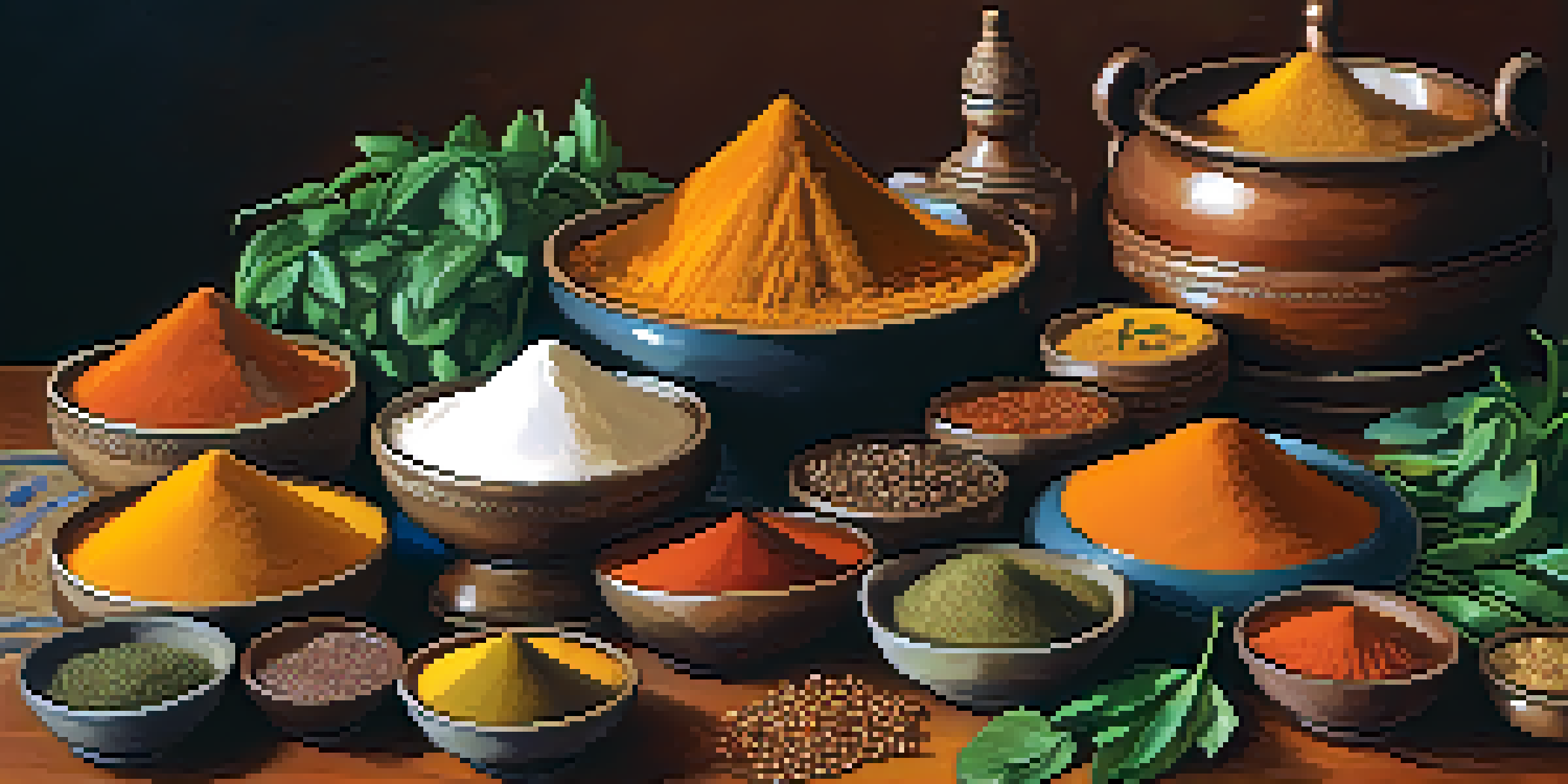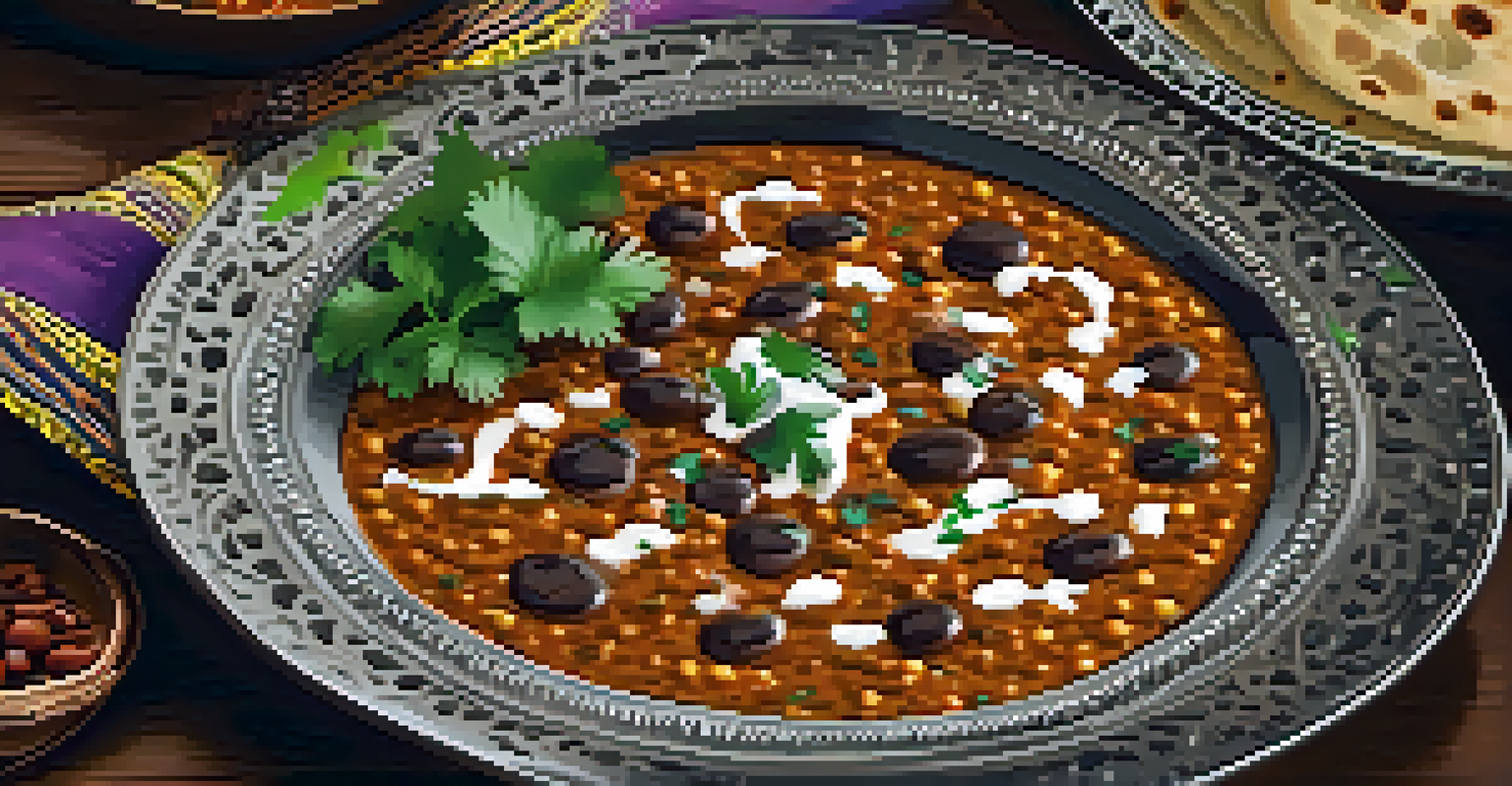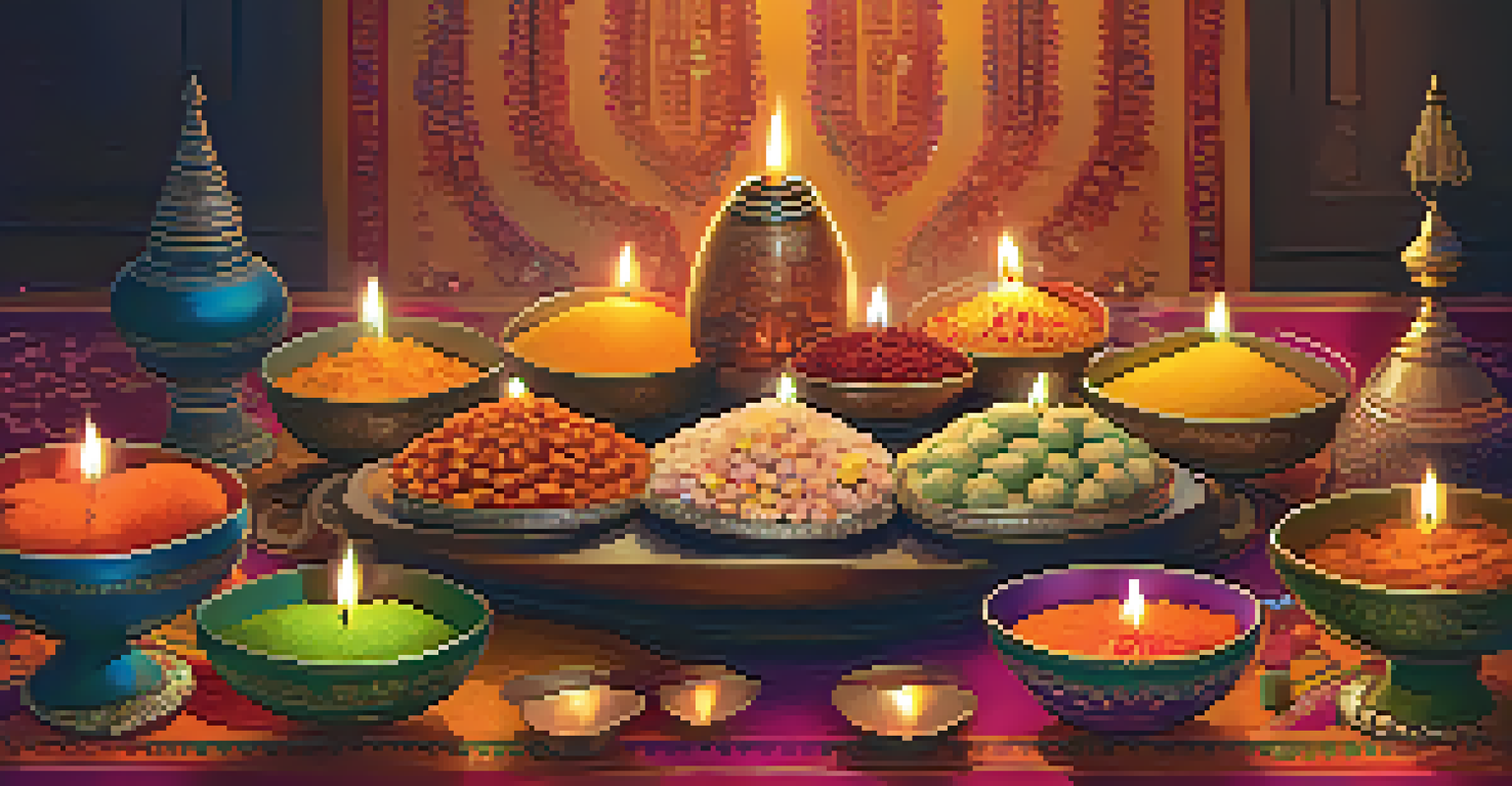Exploring Indian Vegetarian Cuisine: Spices, Traditions, and More

The Rich Heritage of Indian Vegetarian Cuisine
Indian vegetarian cuisine has a deep-rooted history that dates back thousands of years. Many regions in India have embraced vegetarianism due to cultural, religious, and ethical beliefs, making it a significant aspect of the country's culinary identity. It’s not just about avoiding meat; it’s about celebrating a plethora of flavors, colors, and textures.
Vegetarian food is the food of the gods, it is the food of the spirit.
The diversity within Indian vegetarian cuisine is astounding, with each state showcasing its own unique ingredients and cooking styles. For example, the use of lentils in South Indian dishes contrasts sharply with the rich, creamy gravies found in Northern Indian cuisine. This regional variation offers a delightful culinary adventure for anyone willing to explore.
Moreover, the influence of various religions, such as Hinduism, Jainism, and Buddhism, promotes a plant-based diet, further enriching the vegetarian landscape. This cultural tapestry not only makes Indian vegetarian cuisine diverse but also a vibrant expression of India’s traditions and values.
Essential Spices that Define Indian Cuisine
Spices are the soul of Indian cooking, and they play a pivotal role in creating the distinct flavors of vegetarian dishes. Common spices like cumin, coriander, turmeric, and garam masala add depth and complexity, transforming simple ingredients into mouthwatering meals. Each spice has its unique profile, contributing to the overall harmony of flavors.

For instance, turmeric is not just a vibrant yellow color; it brings earthy notes and health benefits, while cumin adds a warm, nutty flavor. The magic happens when these spices are combined, resulting in layered tastes that are both comforting and exciting. It's like an orchestra where each spice is an instrument, coming together to create a beautiful symphony.
Rich Diversity of Indian Vegetarian Cuisine
Indian vegetarian cuisine is a vibrant tapestry of flavors, textures, and regional variations that reflect the country's cultural heritage.
Many Indian cooks have a personal blend of spices, often passed down through generations, which showcases the family's unique touch. This tradition of using spices not only enhances the taste but also connects families and communities through shared culinary practices.
Staple Ingredients in Vegetarian Indian Cooking
The foundation of Indian vegetarian cuisine lies in its staple ingredients, which include lentils, beans, vegetables, and grains. Lentils, known as 'dal,' are a rich source of protein and form the basis of many dishes across the country. From creamy dal makhani to spicy sambar, these legumes are versatile and nutritious.
Cooking is like love. It should be entered into with abandon or not at all.
Vegetables play an equally important role, with seasonal produce often taking center stage. Whether it’s the vibrant green of spinach, the earthy tones of potatoes, or the bright orange of carrots, these ingredients bring color and nutrition to every plate. The use of fresh produce not only elevates the flavors but also encourages a sustainable approach to eating.
Moreover, grains like rice and various types of bread, such as naan and roti, serve as perfect accompaniments to the rich curries and dals. Together, these staples create balanced meals that are both satisfying and wholesome, ensuring that every bite is a celebration of taste and culture.
Traditional Cooking Techniques in Indian Cuisine
The art of Indian cooking extends beyond ingredients to include traditional techniques that enhance the flavors and textures of dishes. One popular method is tempering, or 'tadka,' where spices are quickly fried in oil to release their essential oils before being added to a dish. This technique transforms the aroma and adds a burst of flavor that is quintessentially Indian.
Another technique is slow cooking, which allows the spices and ingredients to meld together, resulting in rich and complex flavors. Dishes like biryani or slow-cooked curries benefit immensely from this method, as the prolonged cooking time helps develop deeper tastes. It’s a practice rooted in patience and tradition, reflecting the essence of Indian hospitality.
The Role of Spices in Flavor Creation
Spices are essential in Indian cooking, transforming simple ingredients into complex and delightful dishes through techniques like tempering.
Moreover, cooking over open flames or in clay pots imparts a unique smokiness and depth that modern cooking methods often lack. These time-honored practices connect cooks to their heritage and produce dishes that are not only delicious but also steeped in history.
Regional Variations: A Culinary Tour of India
India's vast geographical diversity leads to a rich tapestry of regional vegetarian cuisines, each with its unique flair and flavor profiles. In the north, you'll find the creamy, buttery dishes of Punjab, while the south offers fiery curries and rice-based meals that tantalize the taste buds. Exploring these regional variations is like taking a culinary tour without ever leaving your kitchen.
In the West, the Gujarati style emphasizes sweet and savory combinations, while the coastal regions of Kerala and Goa incorporate an abundance of coconut and seafood alternatives. Each region’s climate and culture influence its cooking, resulting in a myriad of dishes that reflect local ingredients and traditions. This diversity keeps Indian vegetarian cuisine exciting and ever-evolving.
Traveling through these regional cuisines opens up new flavors and cooking techniques, showcasing how versatile and adaptive Indian cooking can be. It's not just about the food; it's about the stories behind each dish, the people who prepare it, and the traditions that enrich the experience.
Festivals and Food: Celebrating with Vegetarian Delicacies
In India, food is deeply intertwined with festivals, and vegetarian dishes often take center stage during celebrations. Festivals like Diwali, Durga Puja, and Pongal feature special vegetarian recipes that are prepared with care and love. These dishes not only symbolize abundance but also bring families together in joyful gatherings.
For example, during Diwali, families prepare sweets like laddoos and barfis, while savory snacks like samosas and pakoras fill the air with tantalizing aromas. These culinary traditions are not just about nourishment; they express gratitude, love, and the spirit of togetherness. Each festival has its unique set of dishes, making the celebrations even more special.
Modern Innovations in Traditional Dishes
Contemporary chefs are reimagining classic Indian vegetarian dishes, blending traditional flavors with modern culinary trends to create new experiences.
Moreover, the act of cooking and sharing these meals strengthens bonds among family members and communities. Whether it's the preparation of festive foods or the joy of sharing them, these traditions create lasting memories that celebrate life and culture through the lens of vegetarian cuisine.
Modern Takes on Traditional Indian Vegetarian Dishes
As the world embraces vegetarianism, modern chefs are putting innovative twists on traditional Indian dishes, making them accessible to a broader audience. Think of classic recipes like paneer tikka being reimagined with plant-based ingredients or traditional curries being served in gourmet dining settings. This evolution highlights the versatility of Indian cuisine while maintaining its essence.
Fusion cooking is also becoming popular, where Indian flavors are combined with global cuisines, creating exciting new dishes. Imagine a curry pizza or a dosa wrap filled with international ingredients; these creative combinations showcase how Indian vegetarian cuisine can adapt and thrive in modern culinary landscapes. It's a testament to the timelessness of these traditional flavors.

This modern approach does not diminish the authenticity of Indian cooking; rather, it adds layers to the narrative of how these dishes can evolve while still honoring their roots. It encourages experimentation and opens up a world of possibilities for both home cooks and professional chefs alike.